LED Factory Lighting
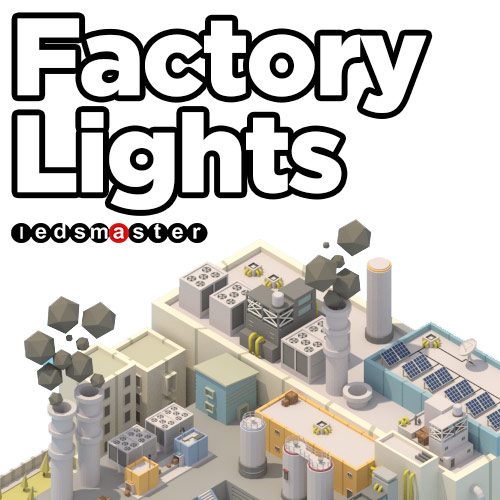
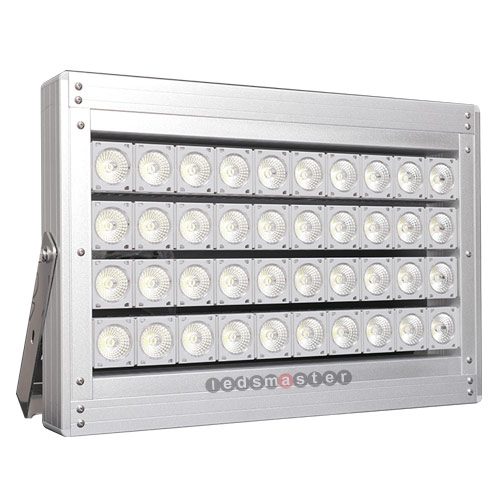
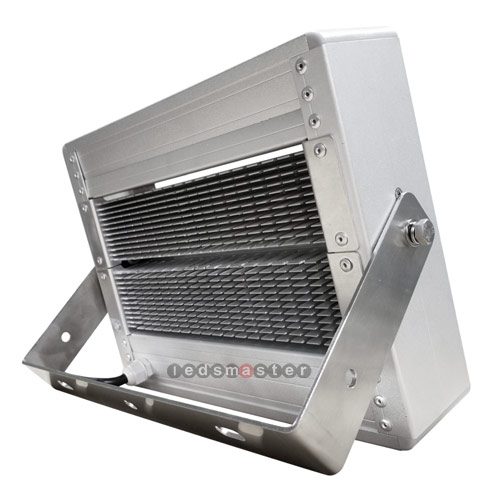
If we want to improves worker’s productivity and workplace safety, we need the proper factory lighting. We have special consideration on each type of manufacturing plants for automobile, food, building material, cloths, cheesecake and more. High temperature or low temperature resistant LED factory lights are the prerequisite of continuous operation. Shock and explosion proof lighting for factory makes the luminaries withstand minor unpredictable events.
In some settings, temporary suspension on manufacturing process may cause significant lost, and lighting has its important function of delivering adequate and appropriate illumination for the areas.
LED replacement is the trend. The 400 watt LED replaces 1000 to 1500 watt metal halide or fluorescent flood lamps, while 750 watt retrofits 3000, 4000 or 5000 watt halogen. In 2018, we upgrade the factory LED lighting so that the lighting efficiency is further improved by 15%.
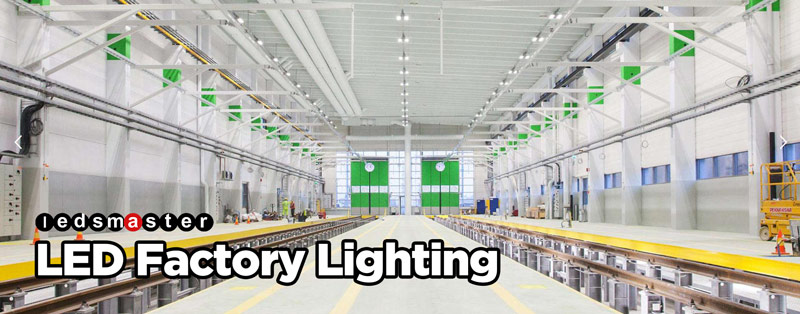
Industrial Lighting Design for Factory
1. Brightness (Lux) Level Standard
How to properly light up a factory? What are the lighting standards? The main working area needs around 500 lux for production line. Higher the lux value, brighter the illumination. If the manufacturing process involves assemble of delicate parts, we would recommend 600 to 1000 lux, which is much more demanding. The below table shows the summary of recommended brightness lux level for different areas inside factory.
| Area inside Factory | Industrial Lighting Lux Level Standard Suggestion |
|---|---|
| Factory Aisle | 50 to 100 lux |
| Goods Storage | 150 to 300 lux |
| Office | 200 to 300 lux |
| Production Line (General) | 500 to 750 lux |
| Quality Control | 600 to 900 lux |
| Precise Mechanical Works | 600 to 1000 lux |
2. Power Requirement of LED Factory Lighting
After knowing the lighting and photometric requirement, how can we implement it? We will select the appropriate power according to its area. For a 1000 square meter environment, we need 200 x 1000 = 200,000 lumen (light output of LED lights), then we have 200000 / 140 = 1430 watt. Here is it – we approximately need 1500 watt LED lights per 1000 meter square field. Since it is the preliminary calculation, please feel free to contact our lighting designer for in-depth photometric lighting plan.
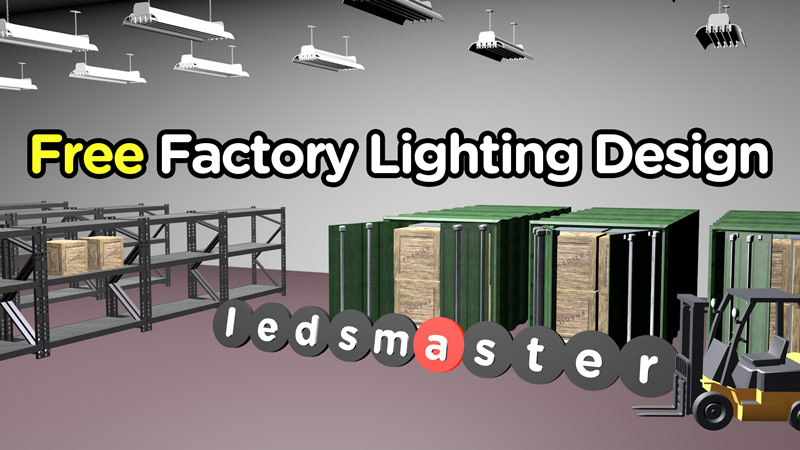
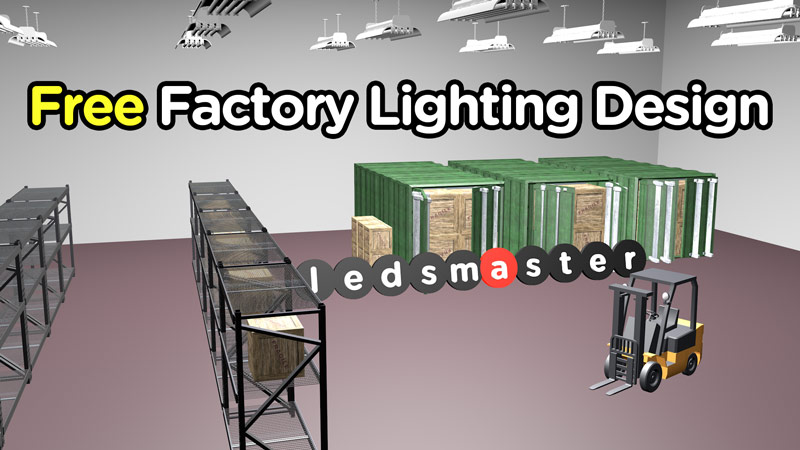
3. Lighting that Resists Extreme Temperature
a) Low Temperature Factory Lighting
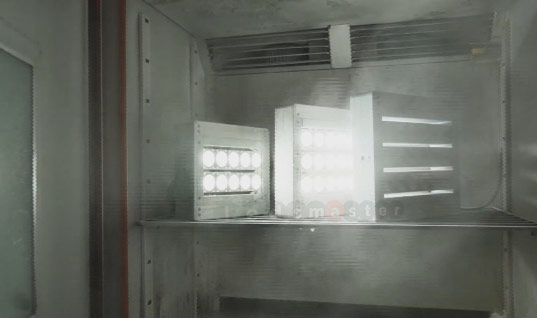 Our LED lights work under extreme low temperature up to -40°C, which means we can apply these lights to the cold storage unit inside the manufacturing plant.
Our LED lights work under extreme low temperature up to -40°C, which means we can apply these lights to the cold storage unit inside the manufacturing plant.
Besides, if you happen to go to low temperature frozen food factory, you will probably be surprised because almost all factories use dim lights. In fact, strong heat will affect the texture and the expiry date of food. To help maintain low ambient temperature, LED lighting that does not produce much heat is a wise choice. Since negligible energy is convert to heat energy comparing to halogen or metal halide bulbs, it saves energy and does not contribute to undesirable raise of temperature. Our products are particularly desirable for heavy industry such as mining sites as well.
b) High Temperature LED Lights for Factory
For high ambient temperature setting, we need to ensure proper heat sink inside the lights because the prolonged heat accumulation will cause the damage of the factory lights. To handle this condition, we use the LED chips having ultra-high lighting efficiency of 170 lm/W; and thus reduce the power consumption. Besides, the effective thermal management system reduces the heat resistance by 80%. The heat accumulation inside the lights are reduced and thus protect the luminaires. The below video demonstrates our LED lighting can work inside the 100°C boiling water.
Better High Bay Factory Lighting System
1. Color Rendering Index
Our high bay LED lighting system for factory has high CRI of 80 to 90, which means we can accurately see the real color of the objects. The importance is that we will need to inspect the finished goods, especially for the paint manufacturing plant or other products that requires accurate color.
The traditional lighting system such as fluorescent and metal halide lights, they have a relatively low CRI from 50 to 65, and thus there is significant deviation on colors under these kinds of lights.
2. Running Cost & Lamp Cost of Factory Lighting
The power required increases with the height of the ceiling. Sometimes we will use up to 1000 to 5000W LED high bay lights (10000 to 50000W halogen equivalent). Having an energy-saving and long-lasting lighting system saves you tones of electricity and future lamp replacement cost.
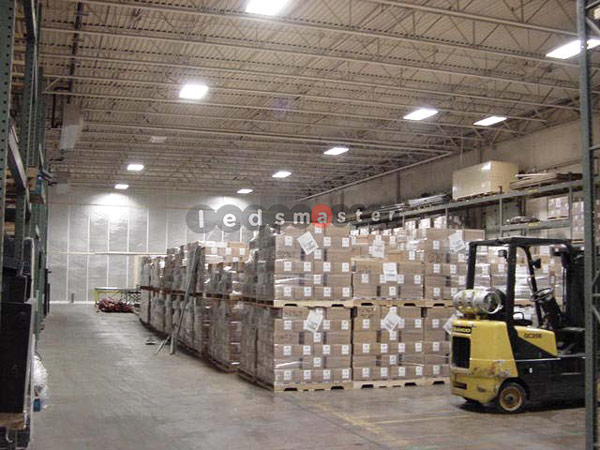 How much does it cost to run the factory lights? For instance, we need 5000W LED inside a specific area, says warehouse, the running cost on lighting = 5000W x 24 hours x $0.12 / 1000 = $14.4 daily, and $423 monthly. If you existing factory lighting system is using halogen or incandescent, the daily operating cost = $144 and monthly $4230. We can see there is a huge saving after replacing to LED.
How much does it cost to run the factory lights? For instance, we need 5000W LED inside a specific area, says warehouse, the running cost on lighting = 5000W x 24 hours x $0.12 / 1000 = $14.4 daily, and $423 monthly. If you existing factory lighting system is using halogen or incandescent, the daily operating cost = $144 and monthly $4230. We can see there is a huge saving after replacing to LED.
Depending on the brands, size, lux level and types of lighting, the factory lamp cost is approx. $3000 to $20000. By contacting our sales representative, we can help establish the accurate cost of your lighting project. Please feel free to approach us for free lighting design.
3. Maintenance
Another paramount factor is the maintenance cost of the lights. If you are using metal halide, mercury vapor or other HID lighting solution, you will probably need to replace the lamps very frequently, says yearly. It is because the lumen depreciation is very high for these traditional lighting solutions.
Nevertheless, our LED has 80,000 hours life span. It lasts for approx. 10 years for 24/7 operation, or 27.4 years if you turn them on for 8 hours per day; hence, you can save a lot of lamp replacement cost as well as the labor cost on installation.
Factory Lighting Guide
Due to the variety of factories and businesses, in order to pursue productivity and safety, and to achieve the most suitable production environment, there are different lighting methods and design.
1. Drawback of non-LED Lighting
The common task of factory lighting is to improve productivity; however, it is very difficult for some types of light source to achieve it. When a gas discharge lamp such as fluorescent is used, strobing may occur. Besides, the conventional incandescent or halogen light bulbs use up to 90% energy to heat the filament, and then emit light as the side-product. Eventually majority of energy is wasted. Since the filament becomes thinner and thinner due to the high working temperature, they will easily go off, perhaps you will need to replace these lights every few months, which is costly and time-consuming especially these high bay lights are installed to the high ceiling inside factory.
2. Clean Room Lighting
There are two types of clean room, namely industrial and medical. The former is to avoid the dust entering the production line, and thus ensure the product quality, while the latter one is to prevent microorganism and bacteria from entering the operation room or ward.
The lighting for factory clean room should have the following characteristics:
a) smooth surface of the lights and the dust does not accumulate
b) the lamp body should not generate static electricity
c) dust-proof sealing on the luminaires
d) waterproof – since the cleaning room should be cleaned regularly, the lamp should be waterproof as well.
3. Lighting for Inspection of Goods
Although many manufacturing procedures are automated, we still need to inspect the product defects with naked eye. The illumination must be suitable for checking the scratch, color, texture and other characteristics of the object. High CRI, uniform and glare-free LED lighting is vitally important.
We deliver high quality and affordable LED flood lights. Please feel free to contact us for more information.